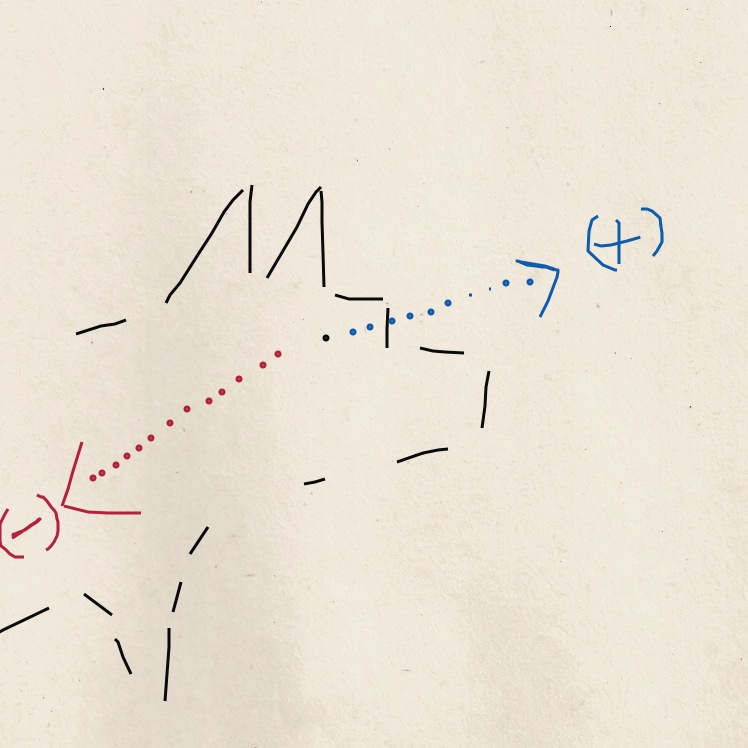
Emotional Fusion is the first step in understanding behavior and thus decoding body language. (See Pavlov) In emotional fusion, external objects of attraction are imprinted onto the dog’s sense of its physical center-of-gravity (p-cog), and the strength of this emotional weld depends on the degree of hunger within the dog for the object. Emotional fusion transpires by way of a subliminal beam of attention directed onto the p-cog, an involuntary response invoked by the bio-mechanical action of moving the body from point A to the object of desire. Every focal gaze outward is coupled to a subliminal beam of attention directed inward. The dog experiences an external object of desire internally and thus a state of awareness initiates a feedback loop with aspects of the external world being imported into the internal processes of emotion along the subliminal beam of attention. The p-cog is designated as a negative (-) because the nerve energy of sensory stimulation destabilizes the preexisting condition of homeostasis and thus a state of awareness invokes the balance circuitry as remaining in place when stimulated becomes unsettling. The dog must move in order to return to “ground,” i.e. stable footing (note the expression “swept off one’s feet” when speaking of strong desire). A hunger for object of desire (+) means the p-cog is also experienced as a void ( ), it constitutes the absence of the +. These two values are equal in that the + or preyful aspect can fill the void and return the individual to stasis, i.e. neutralize the destabilizing property of sensory stimulation. But they are opposites because the – value is synonymous with the form ( ) that encapsulates the +, or preyful essence, in other words. the resistance that will have to be overcome in order to gain access to the +. An object comes into form within the dog’s mind as the confluence of these two values, the – is like the husk surrounding the germ + in the dog’s perception of an object. When the balance mechanisms are sublimated to the hunger processes, resistance becomes arousing and the balance systems now serve as a tuning device. This diagram illustrates the auto-tuning/feedback dynamic through which complex social structure and advanced learning evolves.